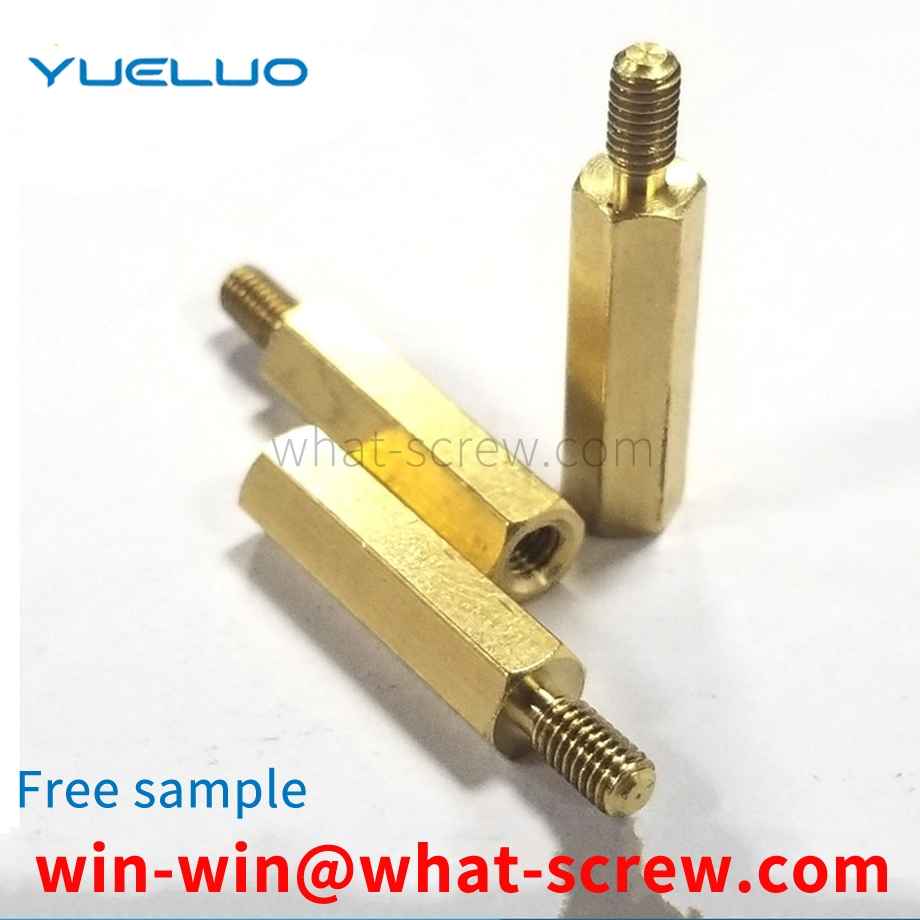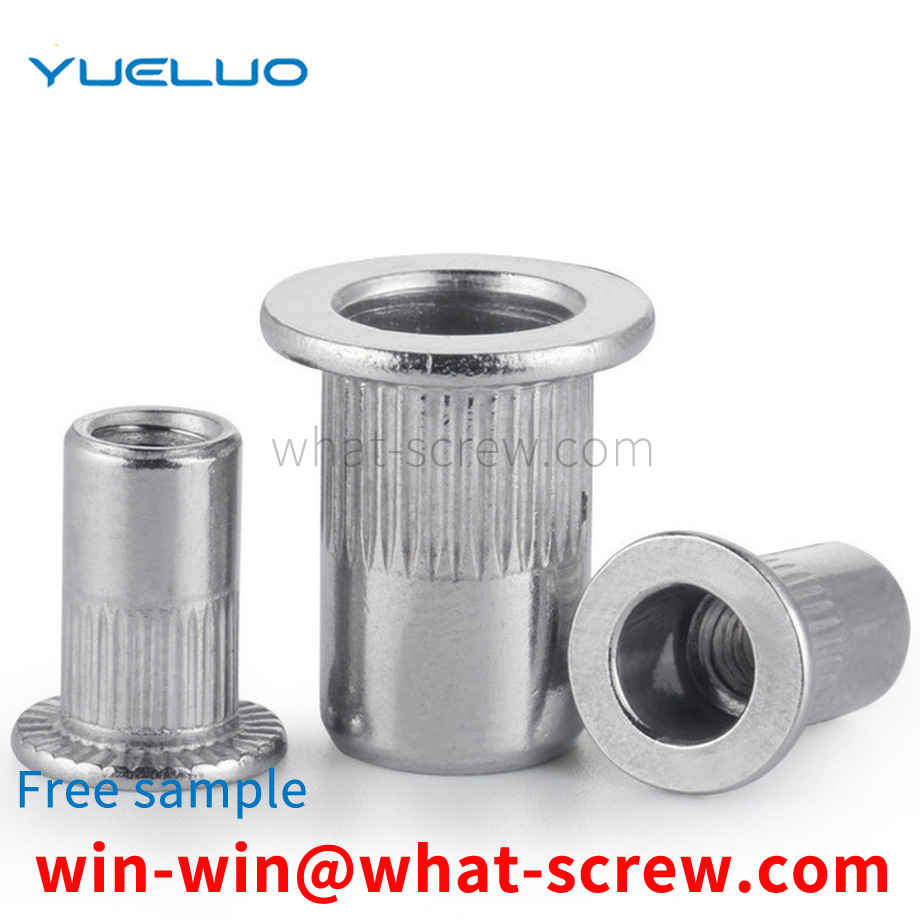In the existing industrial technology field, screws are mostly used for the connection between components. For many electronic products, because the products are more and more thin and light, the connection between the shell and the shell is often affected by the thickness of the shell. , usually need to use screw column structure for connection. Take the existing outdoor three-proof mobile phone as an example: the screw column structure includes a shell, a shell and a screw, the shell is provided with a plurality of screw columns, and the nuts in the screw columns are injected through the in-mold injection process. Directly integrated with the housing. Due to the special use environment and use requirements of outdoor three-proof mobile phones, they need to have good high-strength anti-drop performance, while the three-proof mobile phones in the prior art are subjected to high-strength drop tests due to the fundamental stress concentration of the screw column. During the process, problems such as cracking of the screw column or breaking from the root occur.
There are two types of bolt detection: manual and machine. Manual is the most primitive and the most commonly used consistent detection method. In order to minimize the outflow of defective products, general production enterprise personnel inspect the packaged or shipped products by visual means to exclude defective products (defects include tooth damage, mixed materials, rust, etc.). [2] Another way is automatic machine inspection, mainly magnetic particle inspection. Magnetic particle inspection is to use the interaction between the leakage magnetic field at the defect of the bolt and the magnetic powder, aiming at the difference between the magnetic permeability of the bolts (such as cracks, slag inclusions, mixed materials, etc.) and the magnetic permeability of steel, these materials are discontinuous after magnetization. The magnetic field at the place will be turbulent, and a leakage magnetic field will be generated on the surface of the workpiece where part of the magnetic flux leaks, thereby attracting the magnetic powder to form the magnetic powder accumulation at the defect—magnetic traces. The accumulation of these magnetic powders is observed and explained, and the purpose of rejecting defective products has been achieved.
In mechanical devices, there are many ways to install and connect two components, such as bolt connection, welding, etc., but for installation and connection in a narrow space, such as the socket of two hollow cylinders with smaller diameters, due to the relatively small space It is very difficult to use this method, and it is extremely inconvenient to install and connect.
1. Fixed anchor bolts, also known as short anchor bolts, are poured together with the foundation and used to fix equipment without strong vibration and impact. 2. The movable anchor bolt, also known as the long anchor bolt, is a detachable anchor bolt used for fixing heavy machinery and equipment with strong vibration and impact. 3. Expansion anchor bolts are often used to fix stationary simple equipment or auxiliary equipment. The installation of expansion anchor bolts should meet the following requirements: the distance from the center of the bolt to the edge of the foundation shall not be less than 7 times the diameter of the expansion anchor bolt; the foundation strength of the expansion anchor bolt shall not be less than 10MPa; there shall be no cracks in the drilling holes. The drill bit collides with the steel bars and buried pipes in the foundation; the diameter and depth of the drill hole should match the expansion anchor bolts. 4. The bonding anchor bolt is a kind of anchor bolt commonly used in recent years, and its method and requirements are the same as the expansion anchor anchor bolt. However, when bonding, pay attention to blowing out the debris in the hole, and do not get wet. [1]
In terms of screw standard specification broadcast, there are two versions of the national standard, one is GB70-76, the 76 version, and the other is GB70-8585 version. Our company is now implementing the DIN912 standard, so it should be paid attention to in actual business operations. Difference: GB70-85 and DIN912 completely overlap, so there is no difference in the use of the new standard, mainly because there is a difference between GB70-76 and DIN912: M8 series hexagon products, GB70-76 round head diameter It is 12.5MM, which is smaller than 13.27MM of DIN912. For M10 series inner hexagon products, the round head diameter of GB70-76 is 15MM, which is smaller than 16.27 of DIN912. The inner hexagon of M12 series, the round head of GB70-76 The diameter is 18MM, which is smaller than the opposite side of DIN912, which is 18.27. In addition, the round head diameter of the inner hexagon GB70-76 of M16 and M20 series is 0.33MM smaller than that of DIN912, which are 24MM and 30MM respectively. DIN912 is 24.33MM and 30.33MM respectively. In addition, the width of the inner hexagon between the old standard and the German standard is different due to different standards. The inner side of GB70-76 is smaller, and it should be paid attention to in business operations. In addition, there are also some differences in the carriage screws that may be used at ordinary times. I will also make an explanation here. In the national standard, there are two standards for carriage screws, namely GB12 (small semicircular head square neck screw) and GB14 (large semicircular head square neck screw) Neck screws), and the German standard DIN603 is usually more commonly used in the market. Now to distinguish these three: for the round head and neck, when comparing the same specifications: GB12
We have many years of experience in the production and sales of screws, nuts, flat washers, etc. The main products are: precision flange nuts, equal-head double-head screws, stainless steel washers, full-tooth cup head screws and other products, we can provide you with products suitable for you fastener solutions.



















 Service Hotline
Service Hotline




